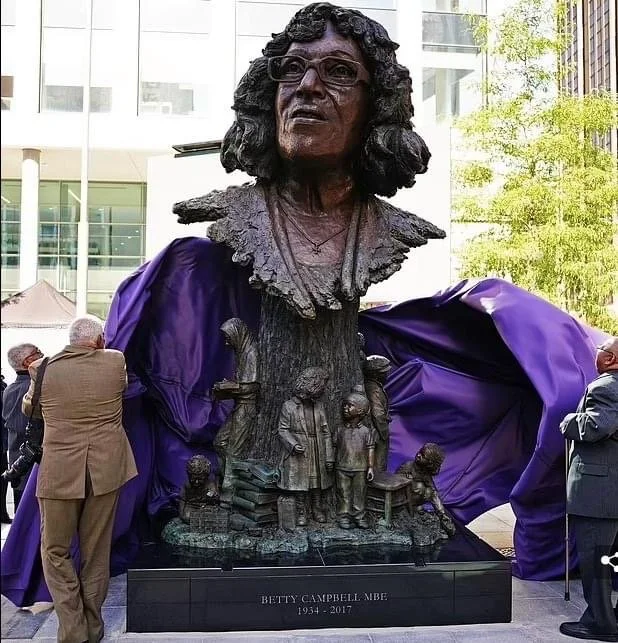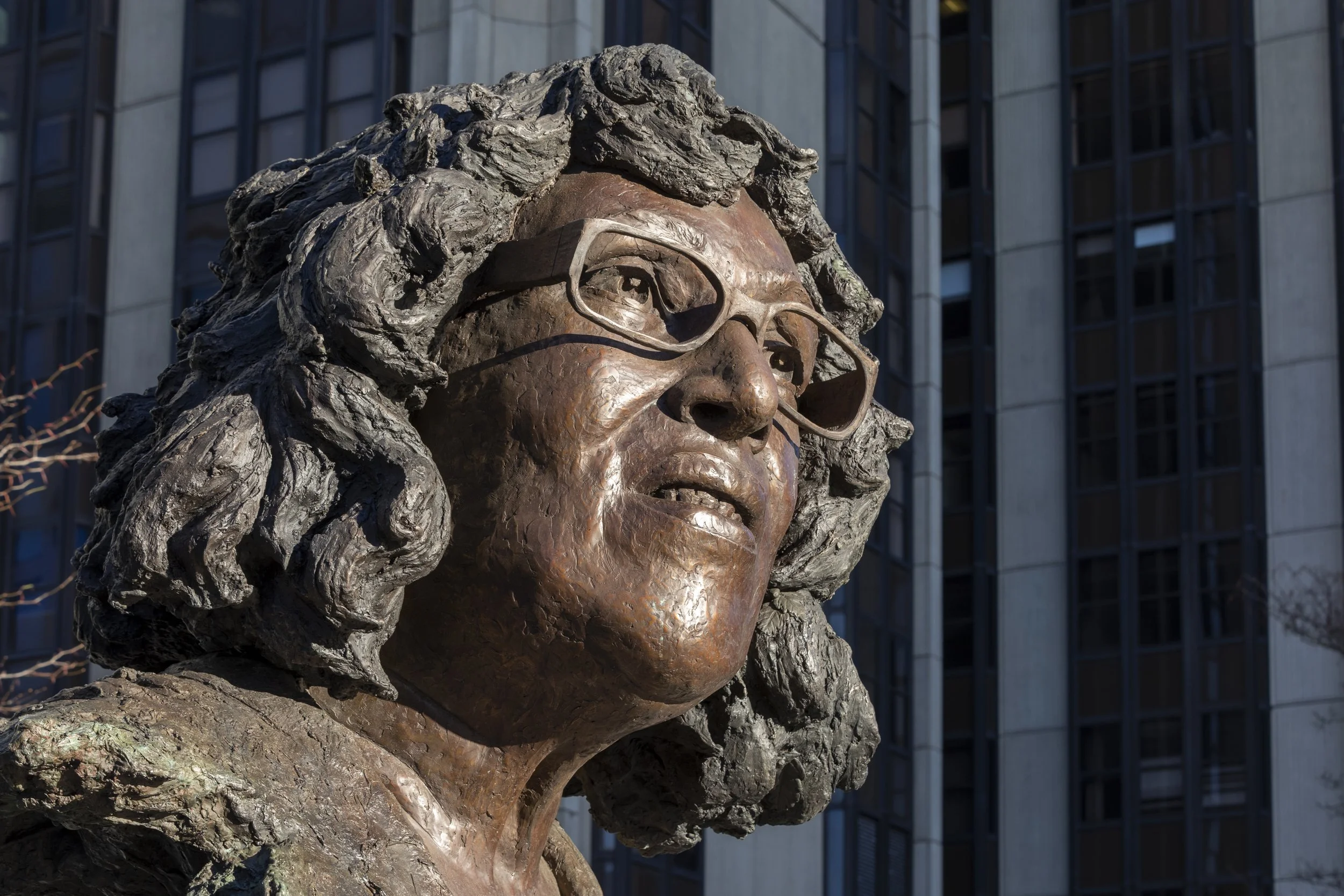The Betty Campbell Memorial Monument
Installed in Cardiff Central Square on 29 September 2021
“A truly iconic, beautiful piece that will attract the world’s attention to Cardiff.”
“It is great art, but perhaps more importantly, it is great public art.”
Eve Shepherd was delighted to win the commission to create her vision of Betty Campbell for public display in Cardiff City Centre - creating a much loved monument which won the Public Statues and Sculpture Association (PSSA) Public Vote Award.
The Betty Campbell Monument was commissioned following a BBC Wales Hidden Heroines poll organised by Monumental Welsh Women.
Betty Campbell MBE (1934-2017) - a black history campaigner who defied almost insurmountable odds to become Wales’ first black Headteacher - topped a public vote to decide who should be the subject of the first statue of a named, non-fictionalised woman in Wales.
Following the Black Lives Matter protests in 2020, it was found that there were no statues of any named individual of black heritage in outdoor public spaces in Wales. After thousands voted for Campbell, Professor Uzo Iwobi, Founder of Race Council Cymru, said “Wales has shown that this black woman truly matters to us all.”
The monument is thought to be the first statue of a real-life woman – that’s not a character from a book or story – in an outdoor public space in Wales
Art critic Gary Raymond said “Shepherd has a bold signature style that lends itself well to both the eye-catching and the symbolic, which is what the best public art should be. Her Campbell is a resolutely distinctive, remarkably accurate rendition of the physical presence of Campbell, and is also deeply evocative and symbolic.
“You could hear the accents of the working class and see people of the communities represented in the diorama of the monument itself drinking it in. People taking selfies, children playing around the base of it, mothers and fathers and sons and daughters gazing at it, discussing it, hanging out around it. If art placed on the buffed floors and whitewashed walls of museums and arts centres must be contemplated in dry silence, then this is what public art is supposed to do.”






